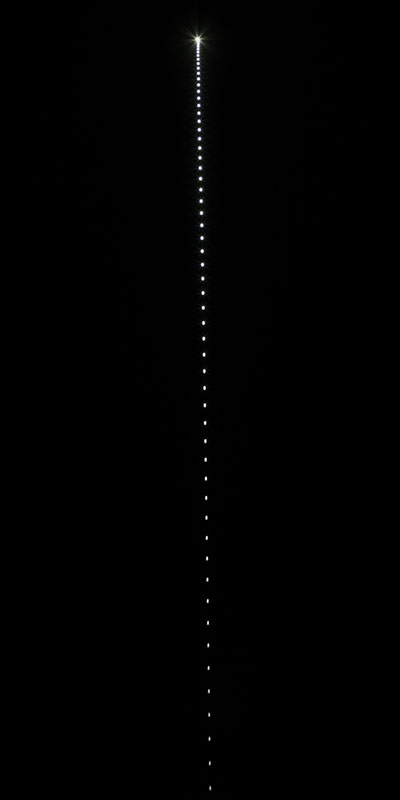At Dunn School in Los Olivos, California, juniors and seniors saw free-fall in a whole new way, thanks to a newly-designed physics course.
Students approximated free-fall by attaching a small strobe light to a heavy ball (to minimize the effects of air resistance); then they photographed the strobe light as it fell. They took this photograph into Adobe Photoshop and measured the height of the light for each individual flash.
Since the frequency of the flashing was consistent, the time interval between flashes was also constant. The end result: a striking visual picture of the strobe light’s acceleration.
“When students saw that the flashes are closer together at the top and farther apart at the bottom of the fall, they really grasped acceleration in a concrete way,” said teacher Mark Hespenheide.



